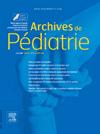生长迟缓儿童对医学干预的反应:一项因果推理方法研究
IF 1.3
4区 医学
Q3 PEDIATRICS
引用次数: 0
摘要
生长迟缓儿童对医疗干预的生长反应研究主要是随机对照试验(RCTs)和观察性研究。随机对照试验在受控条件下建立因果关系,但对现实生活的推广能力有限。相反,观察性研究反映的是现实生活条件,但会受到混杂因素和偏见的影响。缺乏关于未受益于医疗的儿童的追赶生长和相关因素的数据。目的评估病因治疗(ET)与观望方法(WS)对不同病因生长迟缓儿童一年追赶生长的因果影响,并确定独立于干预的良好追赶生长相关因素。研究设计:以身高和身高定义的生长迟缓儿童回顾性队列研究;-2 SD,高度<;-2距离目标高度的标准差,或生长速度<;0 SD。因果推理方法,包括逆概率治疗加权(IPTW)和加权泊松稳健方差回归,分别用于估计治疗组和相对风险组的平均治疗效果。采用赤池信息标准反向选择变量选择程序。结果纳入198例患儿:ET患儿100例,WS患儿98例。主要诊断为继发性生长衰竭(42.4%)。良好的追赶增长在ET和WS中更为频繁(31.31%对3.54%,p <;0.05)。ET组患者达到一年良好的补偿性生长的机会高出10.3倍。年轻和低基线生长速度与更好的追赶生长相关,独立于干预。结论et对生长迟缓儿童的生长追赶有明显的促进作用。无论干预与否,年轻和低生长速度与良好的追赶生长有关。尽管采用回顾性研究设计,但IPTW的使用增强了研究结果在现实世界中的有效性。这种方法通过先进的统计调整强调了干预措施的有效性和结果的稳健性。本文章由计算机程序翻译,如有差异,请以英文原文为准。
Growth response to medical intervention in an observational real-life cohort of children with growth delay: A causal inference methods study
Background
Studies on growth response to medical interventions in children with growth delay are mainly randomized controlled trials (RCTs) and observational studies. RCTs establish cause-effect relationships under controlled conditions but limited generalizability to real-life. Conversely, observational studies reflect real-life conditions but are subject to confounding factors and bias. Data regarding catch-up growth and associated factors in children who do not benefit from medical treatment are lacking.
Objectives
To evaluate the causal impact of etiological treatment (ET) versus a wait-and-see approach (WS) on one-year catch-up growth in children with growth delay of different etiologies and to identify factors associated with good catch-up growth independent of the intervention.
Study design
Retrospective cohort of children referred for growth delay, defined by height < -2 SD, height < -2 SD from target height, or growth velocity < 0 SD.
Causal inference methods, including inverse probability treatment weighting (IPTW), and weighted Poisson regression with robust variance, were used to estimate the average treatment effect in the treated and relative risk, respectively. A variable selection procedure was applied using backward selection by Akaike Information Criterion.
Results
We included 198 children: 100 with ET and 98 with WS. Main diagnosis was secondary growth failure (42.4 %). Good catch-up growth was more frequent with ET versus WS (31.31% vs. 3.54 %, p < 0.05). Patients in the ET group had a 10.3 times higher chance of achieving one-year good catch-up growth. Young age and low growth velocity at baseline were associated with better catch-up growth, independently of the intervention.
Conclusion
ET significantly improves growth catch-up in children with growth delay. Young age and low growth velocity are associated with good catch-up growth, regardless of intervention. The use of IPTW strengthen the validity of the findings in a real-world setting, despite the retrospective study design. This approach highlights the effectiveness of interventions and the robustness of findings through advanced statistical adjustments.
求助全文
通过发布文献求助,成功后即可免费获取论文全文。
去求助
来源期刊

Archives De Pediatrie
医学-小儿科
CiteScore
2.80
自引率
5.60%
发文量
106
审稿时长
24.1 weeks
期刊介绍:
Archives de Pédiatrie publishes in English original Research papers, Review articles, Short communications, Practice guidelines, Editorials and Letters in all fields relevant to pediatrics.
Eight issues of Archives de Pédiatrie are released annually, as well as supplementary and special editions to complete these regular issues.
All manuscripts submitted to the journal are subjected to peer review by international experts, and must:
Be written in excellent English, clear and easy to understand, precise and concise;
Bring new, interesting, valid information - and improve clinical care or guide future research;
Be solely the work of the author(s) stated;
Not have been previously published elsewhere and not be under consideration by another journal;
Be in accordance with the journal''s Guide for Authors'' instructions: manuscripts that fail to comply with these rules may be returned to the authors without being reviewed.
Under no circumstances does the journal guarantee publication before the editorial board makes its final decision.
Archives de Pédiatrie is the official publication of the French Society of Pediatrics.
 求助内容:
求助内容: 应助结果提醒方式:
应助结果提醒方式:


